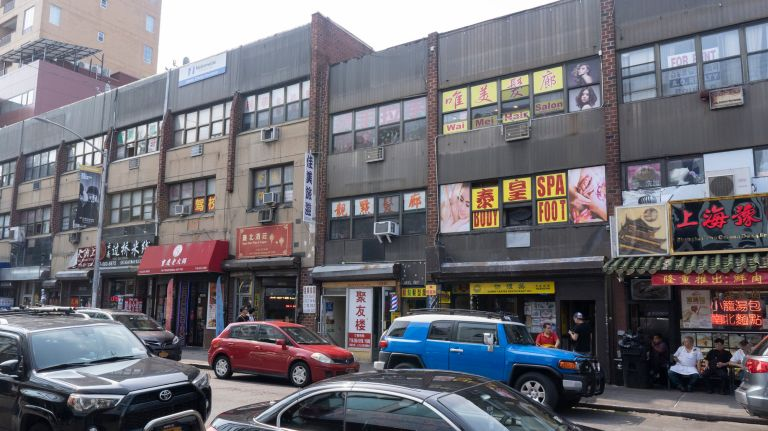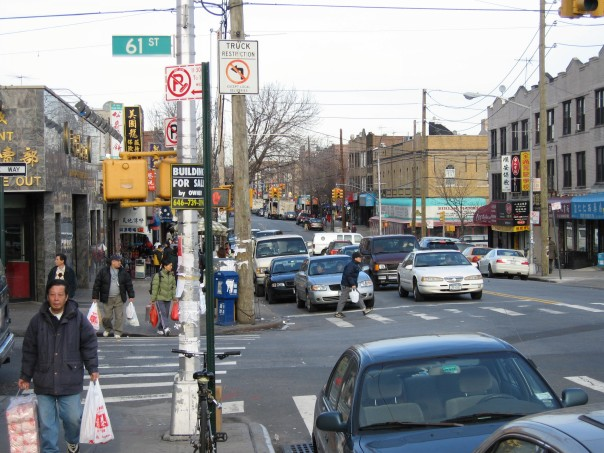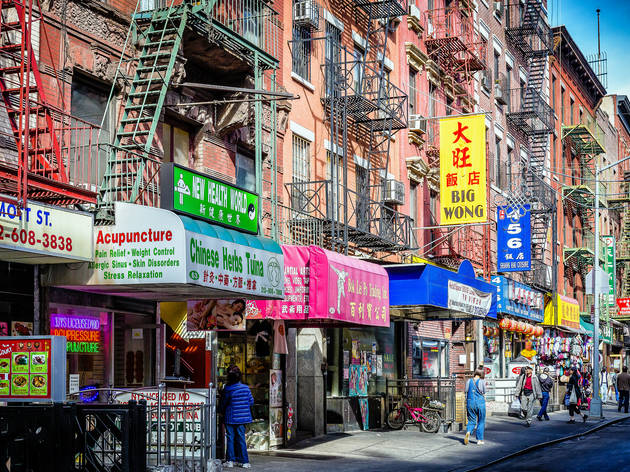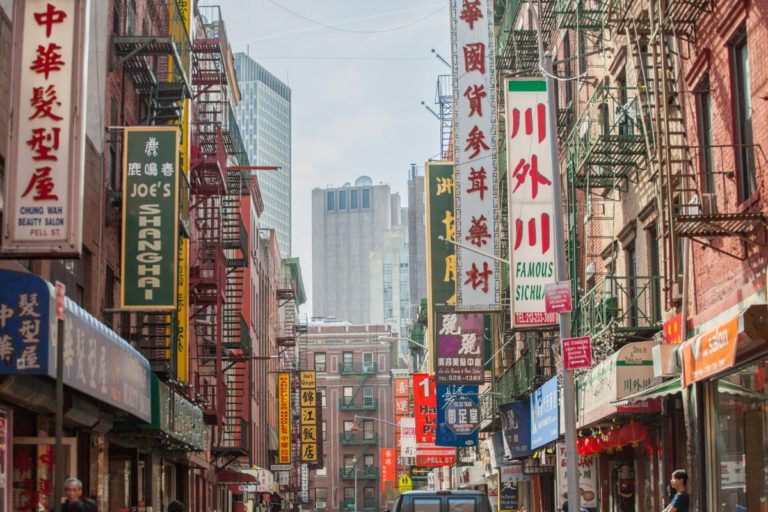Like other immigrants, Chinese immigrants come to the United States hoping to find better opportunities. For these immigrants, going to another country means more than simply changing their address. It means having to part with loved ones, leaving behind an established life, and exposing themselves to a foreign language and culture. These challenges make it difficult for immigrants to adapt quickly.
However, on the other side of the ocean, Chinese immigrants can find a sense of home in Chinatown. And in New York City, there are 3 Chinatowns- in Queens, Brooklyn, and Manhattan.
Flushing, Queens (法拉盛 falasheng):
Chinese population as of 2017: 262,592

Flushing, located in Queens, contains the highest population of Chinese Americans in New York City. The Chinese community is largely concentrated in downtown Flushing, especially around Main Street. Historically, Flushing attracted a lot of Taiwanese immigrants. Because of that, Main Street was once called “Little Taipei.” Today, Flushing is accessible by the 7 train. It is also accessible by a Chinese shuttle bus that runs between the 3 Chinatowns for just $3 per ride.
While walking along Flushing, it is common to see street vendors selling plants, clothes, food, and more. With a food court in the basement of its main shopping mall, New World Mall is a busy hub for shoppers and diners alike. There are also many boba shops, such as the popular Tiger Sugar store that sells brown sugar milk tea, whose wait time can sometimes be as long as an hour. For those looking for a job, Flushing’s many service centers and shops offer opportunities for employment. For parents hoping to boost their children’s grades, Flushing’s various prep centers provide parents and their children with a variety of options to choose from.
Flushing is also a diverse neighborhood. Korean immigrants also make up a large part of Flushing, and it’s common to see store signs in Korean. Many shops in Flushing also sell Japanese goods. For example, the newly opened Daiso is a Japanese equivalent of the Chinese 99 cents store. Because of its diversity, Flushing offers different choices to its Chinese residents while also allowing them to feel like they belong in the community.
8th Avenue, Brooklyn (八大道 badadao):
Chinese population as of 2017: 215,427

8th Avenue in Brooklyn contains the second-highest number of Chinese Americans in NYC. Compared to downtown Flushing which covers a wide area, 8th Ave is more compact. Geographically, it stretches from 68th street to 42nd street. It includes some of 6th and 7th Avenue as well. It’s accessible by the N train, which drops passengers off at the head of 8th Avenue. Originally, 8th Avenue attracted Cantonese immigrants. Nowadays, it’s largely made up of immigrants from Fujian.
Like Flushing, it has wide streets that allow for BBQ skewer carts along the sidewalk. However, narrower streets often lead to human traffic jams. Human traffic jams are particularly bad in the small seafood markets. These markets display buckets of live fish, crabs, lobsters, and shrimp. Bakeries are also widespread, sometimes with two or more barriers on the same street. 8th Avenue has a food court of its own, located in the Feilong Supermarket. The food court serves as a place for shoppers to rest and eat, but it also is a place for people to gather. The Brooklyn Chinese American Association (BCAA) office is also in 8th ave. It offers summer camps and civil services to Chinese Americans. Every year during Chinese New Year, the streets are blocked off so that residents can come onto the streets and celebrate with lion dances, parades, and other performances.
Chinatown, Manhattan (唐人街 tangrenjie):
Chinese population as of 2017: 120,670

While the Chinatown in Manhattan contains the least number of Chinese Americans out of the three, it is the one that’s most well known. Like 8th avenue, it was originally populated with Cantonese speakers, but in recent years saw a surge in the Fujianese population. It’s the most accessible out of the 3 Chinatowns, with the two main train stations being the Grand Street Station and the Canal Street Station. Because it’s located near the Brooklyn and Manhattan Bridge as well as Soho, Tribeca, and Wall Street, there are often a lot of tourists walking through Chinatown. Unlike the other two Chinatowns, the Chinatown in Manhattan contains a lot of souvenir shops run by Chinese Americans to cater to the tourists that pass by.
Manhattan’s Chinatown also has the narrowest streets, making vendor carts less common. The streets showcase many old buildings from the past, such as the oldest brick townhouse on Bowery Street, and the First Chinese Baptist Church on Pell Street. While walking along some of the parks, you can hear traditional Chinese music being played as the elderly gather for a game of poker, chess, or Mahjong. Manhattan’s Chinatown has also been featured in various movies. “Detective Chinatown,” starring Liu Hao Ran and Wang Bao Qiang. This movie was filmed along the streets of Chinatown, and it was a hit back in China.
There’s no doubt that the Chinatowns in New York City are rich in history and Chinese culture. It’s this familiarity what attracted its residents in the first place. However, because these communities only speak Chinese, immigrants don’t really need to learn English. And because these communities replicate China and Chinese culture, residents are seldom exposed to other cultures. These qualities are good for immigrants who miss their homes, and it allows those communities to be an immersive cultural experience. However, it also contributes to the ethnic divide in the American population. America was meant to be a melting pot, but communities like the Chinatowns for Chinese immigrants may be redefining America as a salad bowl.
How do you think Chinatowns redefine America?
Which Chinatown do you like best or would like to visit?
[zombify_post]


0 Comments